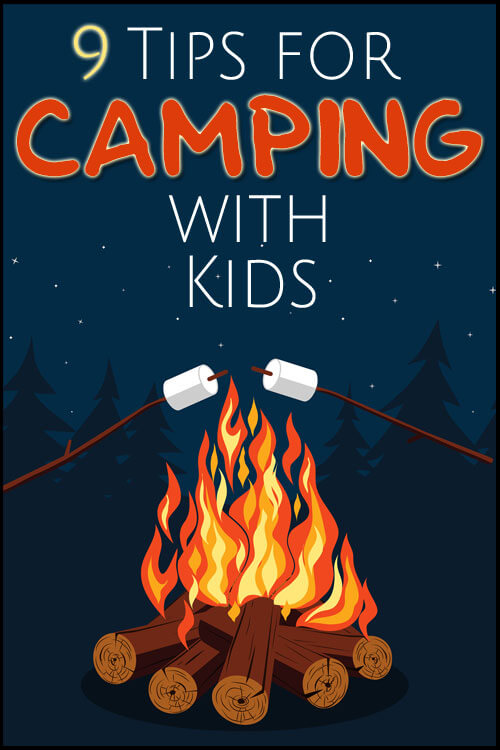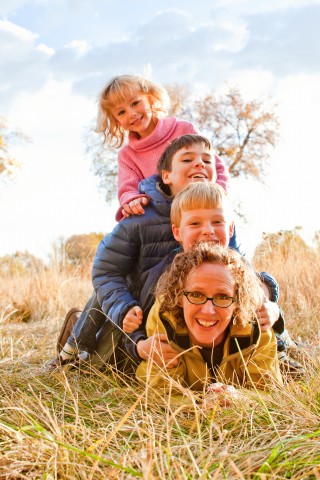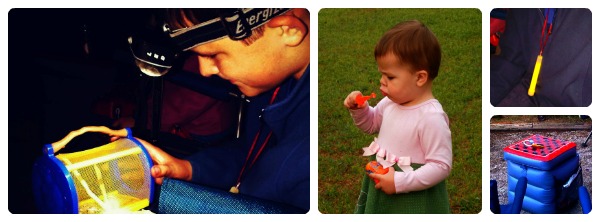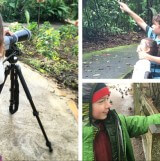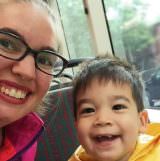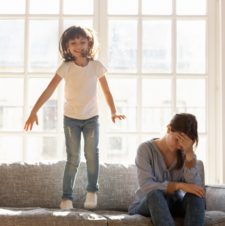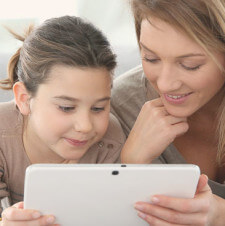9 Tips for Camping with Kids
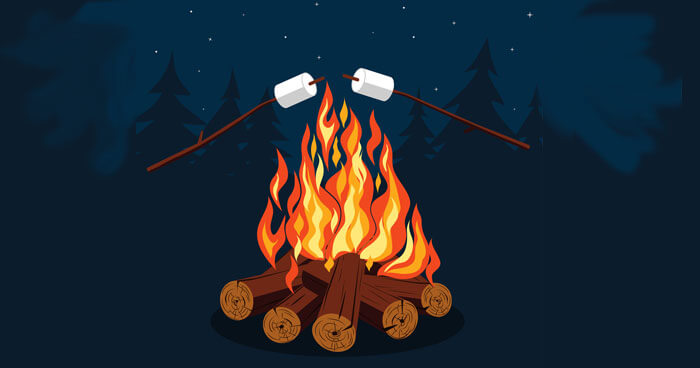
Camping with kids is not as simple as tossing a tent and a bedroll into the trunk and heading for the hills with your buddies. With kids, the gear requirements for camping are more extensive (binkies, potty seats, night lights, nature journals, Lego man headlamps, small day packs, PJs, sun hats, portable high chairs…). The flip side is that the rewards for your planning and packing effort can also be great. The memory tracks kids lay down over a crackling campfire and those ghost stories you whisper while cuddled down in the tent will last them a lifetime.
The other considerable benefit to camping with kids (aside from the simple fact that it’s a blast), is that camping gets children unplugged from the screen-filled world of digital devices that are turning their grey matter to oatmeal. Camping gets the kids—and you—unplugged, connects kids to nature, and facilitates family bonding. It’s all worth the effort. Here are a series of tips from my book, The Down & Dirty Guide to Camping with Kids, for making the packing and planning of a family camping trip go smooth as peanut butter (the creamy kind, that is).
Prep Kids Ahead of Time
My kids have always loved camping without reservation. But some children will require some pre-trip preparation.
- Read camp-themed picture books before you go.
- Camp in the backyard.
- Take a night walk in the neighborhood to get kids used to the sounds of the night.
- If your kids are afraid of the dark, bring portable nightlights and headlamps.
- Pack disposable glowsticks and tuck them into the tent’s mesh pockets just before bedtime.
Use Checklists
Kids require a surprising amount of gear. We’ve skipped the checklist in the past and arrived at the campsite without diapers. Not good! Now I have checklists for my checklists.
- Print out a complete family camping checklist.
- Use the checklist as you pack!
- Double-check the list before you pull out of the driveway.
- Revise the list during your trip if you realize something’s missing.
Organize Your Camping Pantry
Even if you’re car camping, try not to over-pack. It makes it hard to find anything.
- Simplify by getting rid of extra cardboard and plastic packaging on food.
- Portion out the food you need rather than bringing that industrial size carton of Goldfish.
- Put spices and ingredients in small plastic containers or little baggies.
- Label everything.
- Crack eggs into a Nalgene bottle for scrambled eggs so you don’t have to worry about eggs cracking in the cooler.
Pack a Portable Crib
When our kids were babies and toddlers we always brought along one of those handy fold-up cribs. They fit nicely in a tent as long as you have a giant manor-like family tent. Sure, a pack-and-play is a big-ticket gear item in an already full car, but it can keep babies and toddlers contained and help them sleep at night. When you’re setting up camp, you can pop your little cherub in the crib. At night and for naps, the familiarity of a pack-and-play will help them get to sleep.
Bring The Kid Potty
Of course, if your child is in the middle of potty training, you’ll think to pack the little potty. But even for kids who are recently potty-trained, you might consider bringing along a small kid toilet and stowing it in the atrium of the tent. It’ll save you trips to the campground’s bathroom and will make nighttime potty breaks a simple affair.
Start a Nature Journal
For hikes or even just around the campground, bring along a nature journal and a small box of pencils, colored pencils, crayons, and markers as well as a field guide (print or online) to identify flora and fauna. My kids love knowing the scientific names of plants and animals. Here are some other journaling ideas:
- Create beautiful pages with leaf prints by coloring the backside of a leaf with kid markers then pressing the leaf on the paper.
- Use the side of a crayon to make a rubbing of tree bark or a trail sign.
Prepare to Play
When we camp as a family, our kids find entertainment with sticks, rocks, and pine cones. They can spend hours playing in a stream. However, it’s wise to pack balls, a pack of cards, and travel-sized board games just in case they announce that they are bored—right when you’re making dinner. And if you need to retreat to the tent during a rainstorm, small toys and games can help pass the time. Here are some game time ideas:
- Playing cards (for Go Fish, Crazy Eights, Hearts, War)
- Card games (Snap, Wig Out, Spot It, Rat-a-Tat Cat)
- Travel-sized games (dominoes, chess, checkers, Scrabble, Boggle, Blokus, Apples to Apples)
- Lengths of rope for knot tying
- Frisbees, hackey sacks, Nerf football, Whiffle ball and bat
- Small trucks and cars
- Polly Pockets
- Bubbles
- Sand toys
- Camp-themed kid books
Go with Friends
We love to camp with just our family, but we also enjoy group camping with other families. It’s a different vibe for sure. Most kids have more fun and whine less when they’re with their peers. Adults can enjoy chatting with other adults. Group camping also means you can divide up meal responsibilities. Another upside: If you forgot something important (like marshmallows), your friends probably have it.
Remember the First-Aid Kit
Always bring a well-stocked first aid kit with bug-bite remedies, children’s ibuprofen, Band-Aids and about 26 other things. I always include a pair of tweezers and a magnifying glass. Kids are forever getting little splinters and prickers.
HOT TIP: We tried out Coleman’s memory foam sleeping bag and it is a game changer!! There is NO reason that mom shouldn’t be comfortable and warm as well.
CONTINUE READING IN THE BACKYARD
PIN IT FOR LATER
